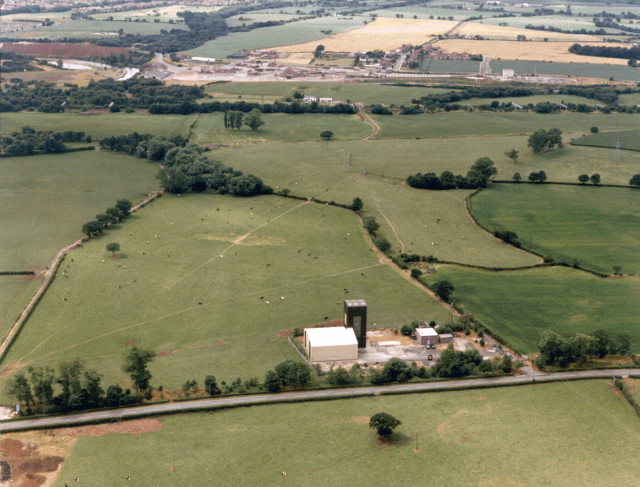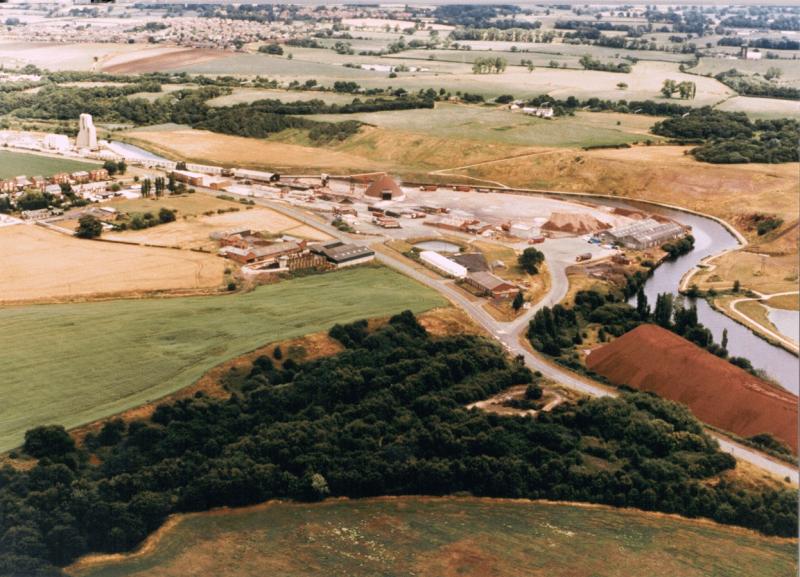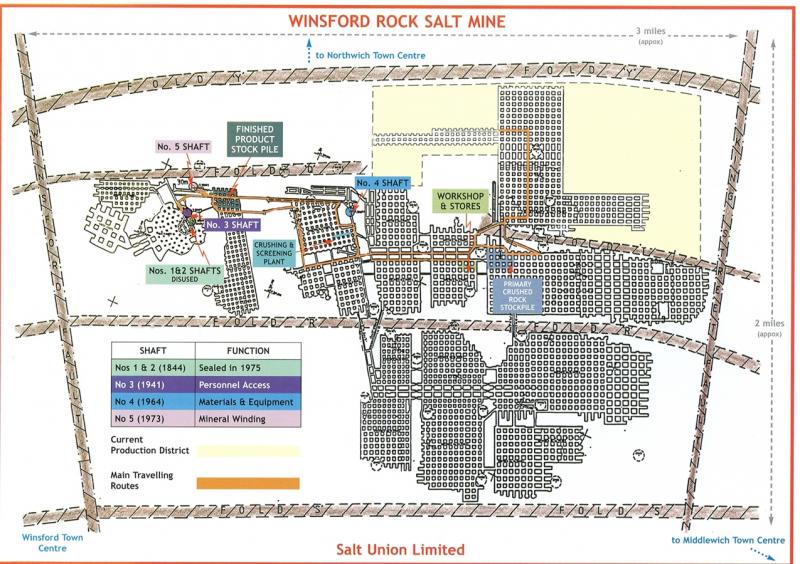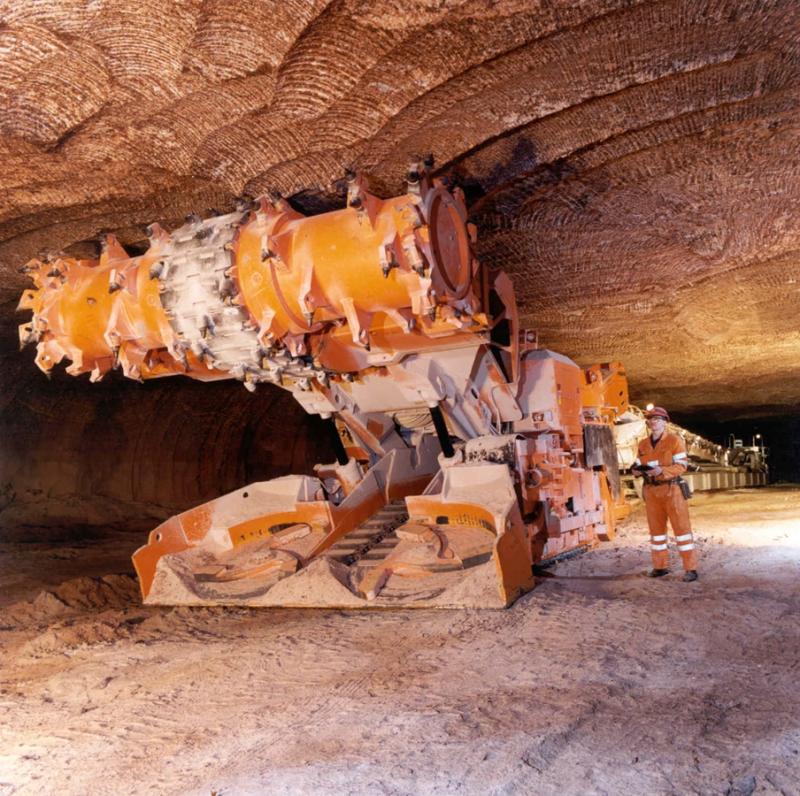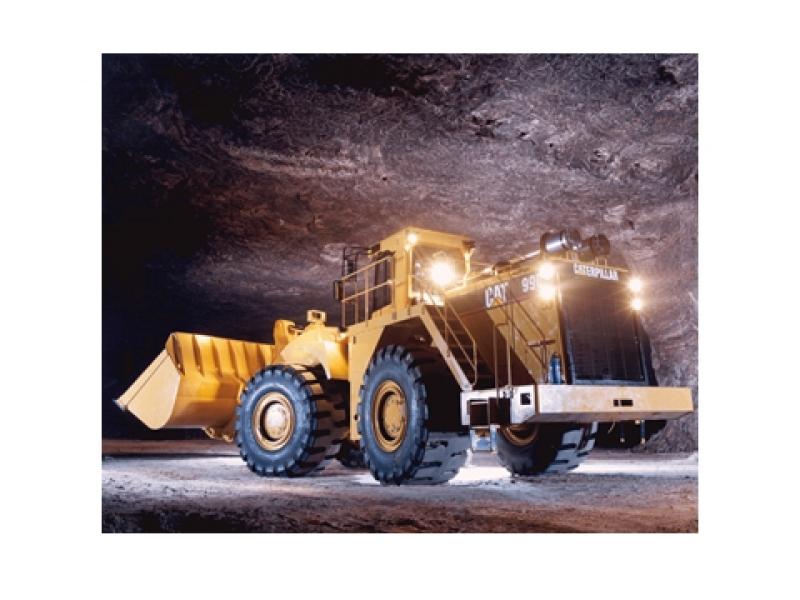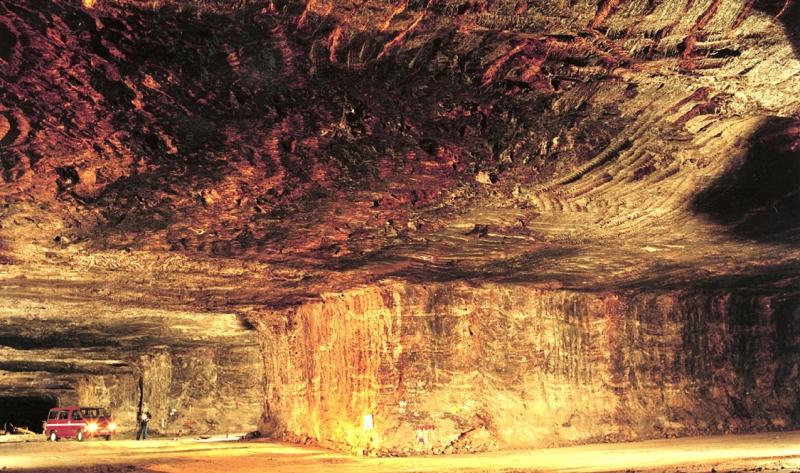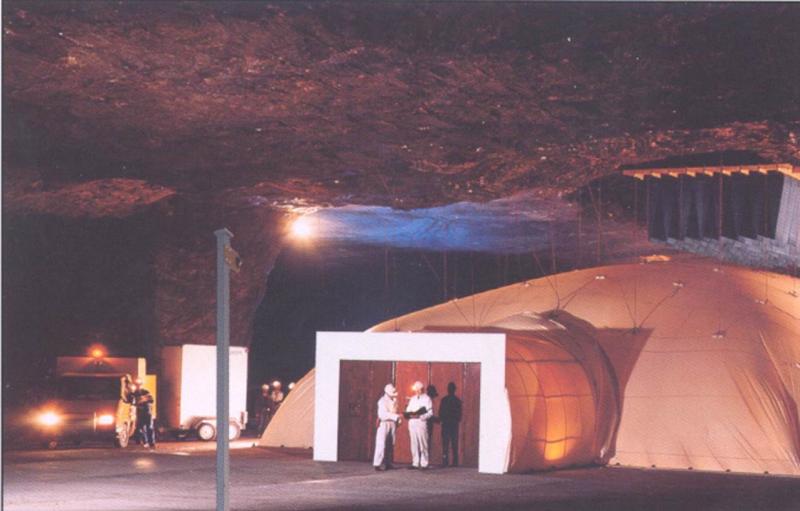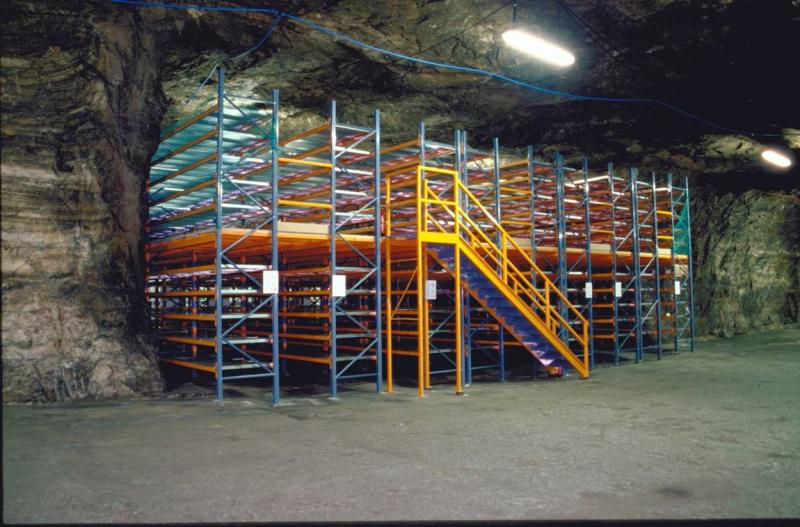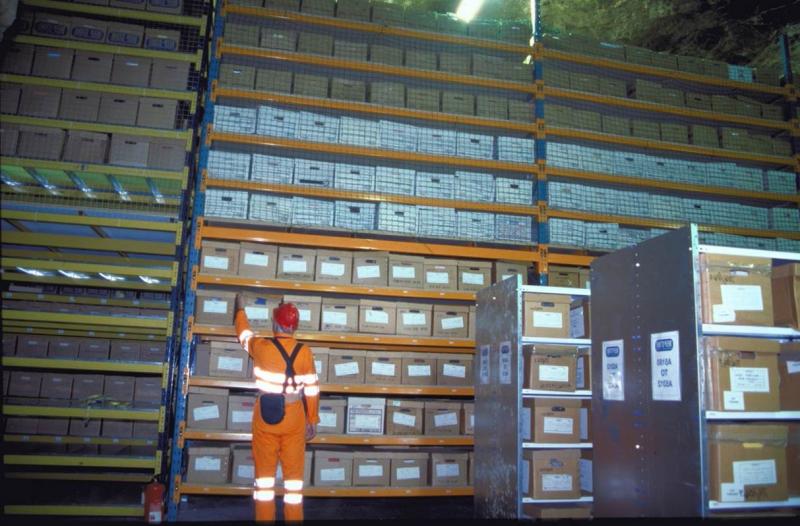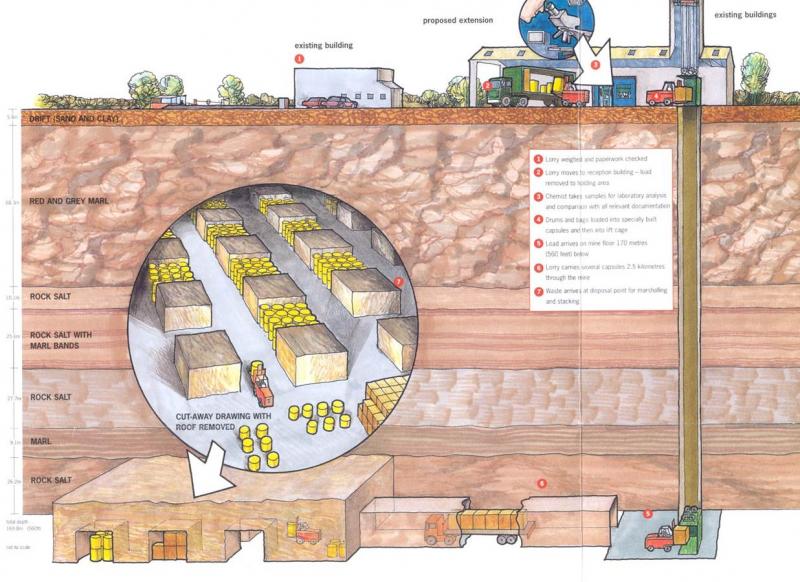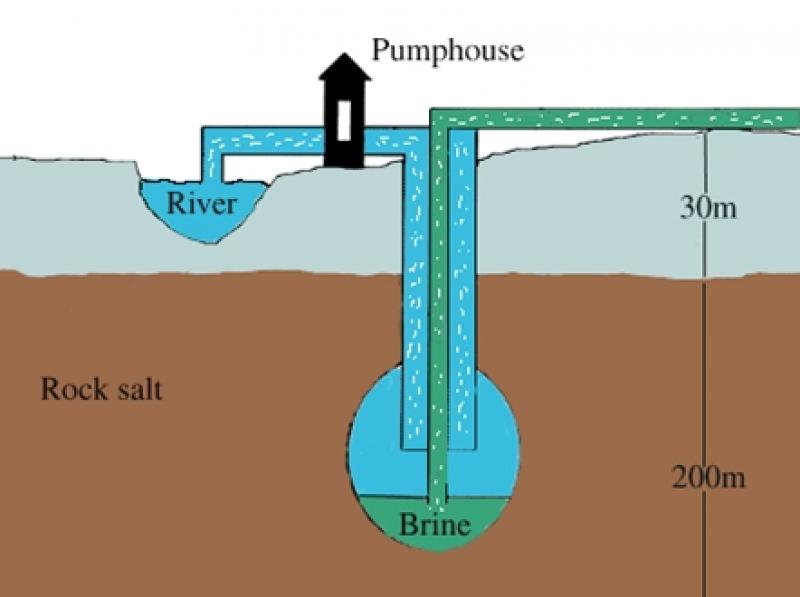Club Weekly Meeting
Tue, Oct 28th 2014 at 12:00 am - 12:00 am
Tony Hoy introduces Mr Gavin Humby to talk (with PowerPoint) about the Winsford Salt Mine
Stewards:- Michael Tiddy Lead* & Barry Evans (Speakers Report)
WINSFORD SALT MINE – Gavin Humby – 28th October Speaker’s Report – Barry Evans
Over 40 years.ago I had the good fortune to visit the mine with Tarporley Round Table arranged by a number of the Tablers who were employed by ICI. The sheer size of the mine still remains in my memory. It is an open area of cathedral dimensions and the almost disbelieve that the atmosphere in the mine is not damp nor corrosive and is used for the storage of archives and other items including a piano. The technicalities of the mining process have long slipped my memory possibly at the thought that after the visit we would be visiting Winnington Hall, the ICI social club for free beer and grub. Therefore it was refreshing to have the details given to the Club in such an interesting way by our speaker, Gavin Humby
Winsford Rock Salt Mine is Britain's oldest working mine. It lies almost 200m under the Cheshire countryside. Winsford Rock Salt Mine (or Meadow Bank Mine as it was originally known) officially opened in 1844 with the sinking of 1 and 2 Shaft. The 4ft_ shafts were lined with timber and puddle clay. Buckets were used to lower men and materials and for elevating the excavated rock.
1 and 2 Shaft were originally sunk to 65m (210ft) and then subsequently sunk to the current depth of 150m (500ft), which allows for better quality salt to be mined. During the 19th Century mining production methods were basic but effective: between 1844 and 1892, one million tonnes of rock salt were mined.
Black power explosives, hand picks and shovels were used to excavate the rock, which was then transported in wooden barrels. Up until the introduction of electricity to the Mine during the 1930s, tallow candles were stuck to the rock and used to light the working face. Bundles of unused candles can still be found in the old cavity of the Mine to this day!
It wasn’t without its dangers as candles and gun powder do not mix!
The room and pillar method of mining, which involves leaving pillars of rock salt behind to support the roof, was adopted from the start at Winsford and, during the 19th Century, the extraction rate was high at 90% (compared to current day extraction rates of between 68% and 75%) The ‘rooms’ that were left behind after mining had an average roof height of 8 metres and a width of 20 metres – whilst this made for a relatively safe and easy working environment compared to coal mines, it wasn’t without its dangers as candles and gun powder do not mix!
During the late 19th century the salt industry descended into chaos due to over capacity. In 1888, Salt Union, which consisted of 66 salt operators from the area, was formed in an attempt to bring order to the market.
However, with salt also being supplied from the Northwich Mines, the market remained over-supplied. Despite having mined out some one million tonnes of rock salt, the Winsford Mine was shut down in 1892.
In 1928 the last mine in Northwich flooded, resulting in the re-opening of the Winsford Mine. The Mine re-opened with technology on its side and to a new era and rapid expansion of the mine began in the 1950’s due to the use of rock salt to de-ice the country’s expanding road network system. It has since grown steadily and, today, the Mine at Winsford now stretches 5km east to west and 3 km north to south
Salt at Winsford was formed some 220 million years ago during the Triassic geological period. At this time the United Kingdom was still attached to Europe, and central England consisted of a series of inland seas that were regularly replenished by the surrounding seas. The combination of the inland seas and the desert environment led to slow evaporation over many millions of years, resulting in the formation of the salt beds which lie under Cheshire and the surrounding areas. During this process, substantial quantities of sand blew in from eastern deserts, helping to create the pink tinge by which Winsford rock salt is recognisable today.
Although the original salt bed is now fragmented, it can be traced from its starting position in Carrick Fergus, Northern Ireland, from where it dips below the Irish Sea before reappearing around central England to then dip under the North Sea. The final part of the salt bed lies across Europe and, in fact, Scandinavia is the only European country without its own natural salt supply.
The Mine at Winsford has always been serviced by vertical shafts. As discussed in the history section the original shafts, 1 and 2, were installed in 1844 and continued to elevate the bulk of production, despite the sinking of 3 Shaft in 1941.
Amazingly, 1 & 2 Shaft remained in use for nearly 130 years before being sealed and grouted in the 1970s. The original shafts were ultimately replaced by 3, 4 & 5 Shaft.
No 3 Shaft, as with all the subsequent shafts, is circular in cross-section. The shaft was originally brick-lined but was later reinforced with a concrete lining. The diameter is 3.05 m (10ft) and the depth, including the sump, is 163m (550 ft) although the decking level is around 150 m (500 ft).
No 3 Shaft is currently used for personnel access but the original lift has been upgraded. The original comprised two double-deck cages operating in balance running on steel rail guides and driven by a single-drum, manually controlled winding engine. The lift was replaced in the 1970s by a fixed self-service lift, similar to a car park lift. It is unusual to find a fixed lift cage in a mine but the stability of the rock salt at Winsford affords us this luxury.
The lift takes approximately one minute to descend
1 & 2 Shaft remained in use for nearly 130 years before being sealed and grouted in the 1970s. The original shafts were ultimately replaced by 3, 4 & 5 Shaft.
No 3 Shaft, as with all the subsequent shafts, is circular in cross-section. The shaft was originally brick-lined but was later reinforced with a concrete lining. The diameter is 3.05 m (10ft) and the depth, including the sump, is 163m (550 ft) although the decking level is around 150 m (500 ft).
No 3 Shaft is currently used for personnel access but the original lift has been upgraded. The original comprised two double-deck cages operating in balance running on steel rail guides and driven by a single-drum, manually controlled winding engine. The lift was replaced in the 1970s by a fixed self-service lift, similar to a car park lift. It is unusual to find a fixed lift cage in a mine but the stability of the rock salt at Winsford affords us this luxury.
No 4 Shaft, installed in 1963, is the downcast shaft situated one mile away from 3 Shaft. The shaft is significantly larger, measuring 4.88m (16ft) in diameter, and has a concrete lining. The total depth of the shaft is 189m with the decking level situated at 183m. The lift consists of a cargo compartment (lower), measuring 7 metres in height, 2.4 metres in width and 4 metres in depth, with a personnel carrier (upper). The lift takes approximately five minutes to descend.
No 4 shaft serves as the principal service shaft, by means of which the majority of underground equipment and materials are brought into the Mine. All major mechanical items for use underground are dismantled into suitably sized component sub-assemblies at the surface and placed into the cargo compartment via transit capsules, forklift trucks or hoisting
Once the equipment arrives at the base of 4 Shaft it is transported to the underground workshops for assembly. Due to the process required to bring machinery into the Mine, the majority of machines never leave it.
No 5 Shaft, the last shaft to be installed, was completed in 1973. It is positioned approximately 100m north of No 3 Shaft. The shaft dimensions are similar to 4 Shaft - 4.88m (16ft) in diameter with a concrete lining and an overall depth of 164.5 m. 5 Shaft’s primary function is the elevation of the finished rock salt.
No 5 Shaft consists of a winding engine and two cage over skip combination units suspended on ropes, which operate in balance. The skip loading station is located 155m below the surface, with the skip portions being of the bottom-dump type and each having a capacity of 9 tonnes. The rock winding process is completely automatic, although it can be manually controlled when necessary for maintenance, personnel riding or shaft inspections.
Air drawn into the Mine is initially circulated through specially constructed air conditioning tunnels, known as the de-watering tunnels. This enables any excess moisture contained within the air to condense in a controlled manner, thus minimising its effect on the Mine. The rock temperature stabilises the Mine air temperature to a constant 14degreesC. Once the air has left the de-watering tunnels it is directed to the faceline, from where it begins a nine-hour journey around the perimeters of the Mine workings.
Due to the vast expanse of void space at Winsford (23 million cubic metres) the airflow needs to be channelled. This is achieved through the combined use of auxiliary and booster fans positioned around the Mine; heavy duty PVC and Hessian brattices hung between pillars and automatic roller shutter doors.
Overall, the salt beds at Winsford provide a very safe natural environment and we do not have to contend with methane and gas issues which can occur in collieries or other mines. However we still monitor constantly and frequently take air samples to comply with statutory requirements.
A considerable amount of work has been carried out since 1958 by staff of the Mining Department at Newcastle University, with investigations undertaken into the rock mechanics for designing the Mine workings. In particular, instruments were developed to measure rock creep and strata deformation in strategic places in the Mine. Although Winsford has a long history of stability, it is the nature of rock salt to creep (move) over time and this must be constantly monitored.For nearly 70 years the mining method for winning rock salt at Winsford was through the use of drilling and blasting techniques with the aid of machinery. Although technology in the 1930s wasn’t as sophisticated as it is today,
the fundamental technique didn’t vary, although over the years bespoke machinery was developed for Winsford.
The production sequence was essentially a five-stage process - undercutting, drilling, blasting, loading out and scaling
In January 2002 Salt Union Ltd purchased a Continuous Mining Machine (JCM) to replace the traditional method of salt extraction via drilling and blasting. This was to be the most significant change to production methods ever seen at Winsford Rock Salt Mine.
Many mining machines were considered during the selection process, which eventually lead to the purchase of a JOY 12HM36, with ‘JOY’ being the name of the manufacturer.This was followed by a second JCM in 2011 and a third JCM was added in 2014.
Once the rock salt has left the working face it is carried on the conveyor system to the underground crushing and screening plant. To avoid any waste metal entering the crushing plant, the rock salt is conveyed under metal detectors and magnets at three different points. A series of crushers and screens then reduce the size of the salt and separate it into 0-6mm and 0-10mm product.
The crushing plant and all the conveyors are automated and controlled from No 5 Shaft surface, where a controller monitors underground activity via television screens and passes any requests via radio.
Surface stock levels are put in place ready for the start of the winter, enabling Compass Minerals to despatch product to customers with immediate effect during heavy winter demand. Additional salt is always readily available from both underground stocksand as a result of ongoing production. Compass Minerals business is wholly dependent on the severity of the winter and we must always be prepared to provide salt to our customers at a moment’s notice!
The rock salt is despatched to customers within the UK mainly via 28-tonne tipper trucks, although a small percentage is also transported by rail. Due to surges in demand we operate a computer-based stock management system, into which customers input
their usage and rock salt is sent out accordingly. The stock management system, combined with encouragement to restock during the summer months, ensures that Compass Minerals is always able to meet demand.
Barry Evans
